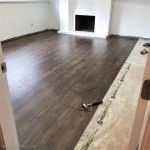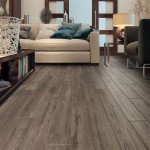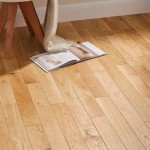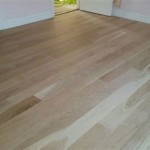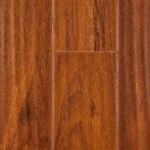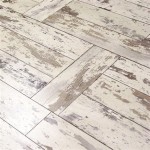Engineered Oak Flooring vs. Laminate: The Essential Guide
Choosing new flooring for your home is a significant decision that can impact its overall style, comfort, and durability. Two of the most popular options on the market are engineered oak flooring and laminate. Both offer unique advantages and disadvantages, so it's essential to understand their differences to make an informed choice that meets your needs.
Construction
Engineered oak flooring consists of a real oak veneer bonded to a plywood or high-density fiberboard (HDF) core. The oak veneer gives the flooring the natural look and feel of solid oak, while the core provides stability and moisture resistance. Laminate flooring, on the other hand, is constructed with a printed design layer that mimics the appearance of wood, stone, or other materials. This layer is bonded to a moisture-resistant HDF core and covered with a protective wear layer.
Appearance
Engineered oak flooring offers a more authentic and natural look compared to laminate. The real oak veneer replicates the grain and texture of solid oak, providing a timeless and elegant aesthetic. Laminate flooring can mimic the appearance of various materials, including oak, but its printed design may not be as detailed or realistic as real wood.
Durability and Maintenance
Engineered oak flooring is generally more durable than laminate. The oak veneer provides excellent wear resistance and can withstand moderate foot traffic and occasional spills. Laminate flooring is less durable and can be more susceptible to scratches, dents, and moisture damage. However, it is easier to clean and maintain, requiring only regular sweeping and occasional damp mopping.
Water Resistance
Engineered oak flooring has some water resistance due to the plywood or HDF core, making it suitable for use in areas with occasional moisture exposure. However, it is essential to seal the flooring properly to prevent moisture damage. Laminate flooring is not water-resistant and can be damaged if exposed to significant moisture or spills.
Cost
Engineered oak flooring is typically more expensive than laminate flooring. The cost varies depending on the quality of the oak veneer and the thickness of the core. Laminate flooring is a more affordable option that offers a similar aesthetic to oak flooring.
Conclusion
Both engineered oak flooring and laminate offer advantages and disadvantages, making them suitable for different needs and preferences. Engineered oak flooring provides a more authentic and durable option, while laminate flooring offers a more affordable and easy-to-maintain alternative. By understanding the key differences between these two flooring types, homeowners can make an informed decision that best suits their home's style, lifestyle, and budget.

Engineered Flooring Vs Laminate Everything You Need To Know Forbes Home

Choosing Between Laminate And Engineered Wood Flooring Jg

Natural Engineered Flooring Oak Double White Brushed Uv Lacquered 14 3mm By 190mm 400 1500mm At Wood And Beyond

Elgin Latte Engineered Oak

Hardwood Vs Engineered Wood Flooring Which Is Best For You Forbes Home

Engineered Oak Solid Wood Flooring 18 5mm X 150mm Rl Direct

Studley Harvest Engineered Oak

Studley Spring Engineered Oak

Oak Arsenal 12 2 Engineered Timber Flooring

190mm Engineered Brushed Uv Oiled Natural Charnwood Oak Flooring 2 166m² Ambience Hardwood


